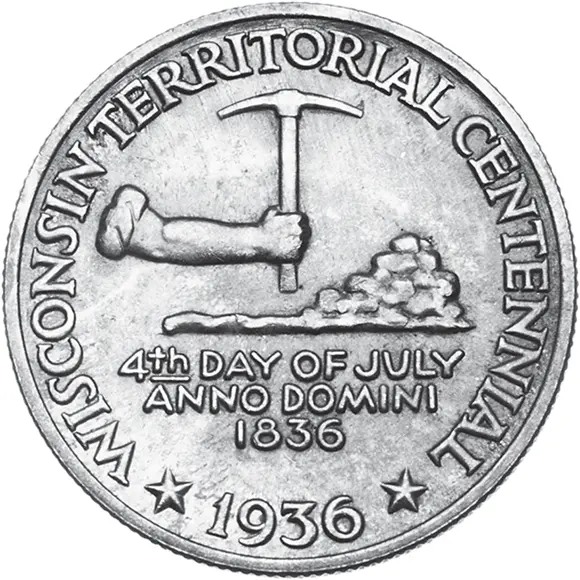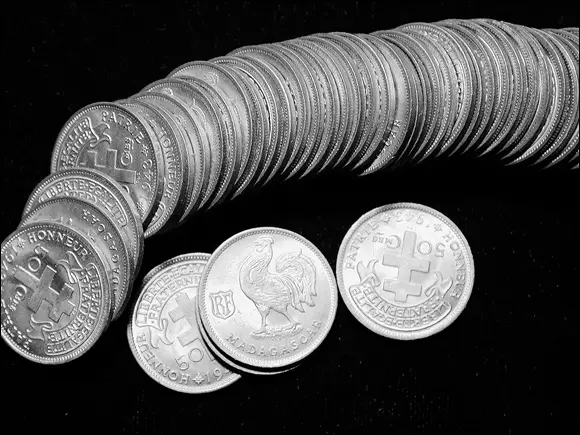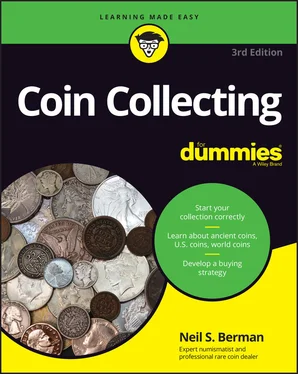Neil S. Berman - Coin Collecting For Dummies
Здесь есть возможность читать онлайн «Neil S. Berman - Coin Collecting For Dummies» — ознакомительный отрывок электронной книги совершенно бесплатно, а после прочтения отрывка купить полную версию. В некоторых случаях можно слушать аудио, скачать через торрент в формате fb2 и присутствует краткое содержание. Жанр: unrecognised, на английском языке. Описание произведения, (предисловие) а так же отзывы посетителей доступны на портале библиотеки ЛибКат.
- Название:Coin Collecting For Dummies
- Автор:
- Жанр:
- Год:неизвестен
- ISBN:нет данных
- Рейтинг книги:4 / 5. Голосов: 1
-
Избранное:Добавить в избранное
- Отзывы:
-
Ваша оценка:
- 80
- 1
- 2
- 3
- 4
- 5
Coin Collecting For Dummies: краткое содержание, описание и аннотация
Предлагаем к чтению аннотацию, описание, краткое содержание или предисловие (зависит от того, что написал сам автор книги «Coin Collecting For Dummies»). Если вы не нашли необходимую информацию о книге — напишите в комментариях, мы постараемся отыскать её.
Coin Collecting For Dummies,
numismatics
Coin Collecting For Dummies
Coin Collecting For Dummies — читать онлайн ознакомительный отрывок
Ниже представлен текст книги, разбитый по страницам. Система сохранения места последней прочитанной страницы, позволяет с удобством читать онлайн бесплатно книгу «Coin Collecting For Dummies», без необходимости каждый раз заново искать на чём Вы остановились. Поставьте закладку, и сможете в любой момент перейти на страницу, на которой закончили чтение.
Интервал:
Закладка:
Silver is popular because it’s
Common: Vast quantities of silver have been found in various parts of the world, including the United States, Mexico, and South America. Because it’s common, silver is the perfect metal for creating lower-value coins for use by the general public.
A naturally occurring element: Found deep within the Earth, silver is usually mixed with another great coinage metal: gold. Although native silver is perfectly good for casting into ingots and making into coins, most of it is processed to purify the silver and to separate out the more valuable gold.
Beautiful: Pure silver has a bright white luster and a deep brilliance. As it tarnishes, silver can acquire some lovely colors, including blues, reds, and purples, especially coins that have been stored near a source of sulfur, such as paper albums.
Commemorative coins
In the 1930s, numerous proposals for commemorative coins appeared before the U.S. Congress. Although many of the coinage bills had narrow appeal, they became law, and the U.S. Mint dutifully struck the coins (including the one shown in Figure 2-1), which were sold through distributors who added a premium above the face value of the coins. Members of the collecting public paid a premium for the coins and were happy to add them to their collections. But the U.S. Mint, producing a new coin every few months, almost seemed to be saying to collectors, “Here’s the latest commemorative. Please send your money — and by the way, there’s another commemorative coin coming out next month, so please be ready to send your money for that one as well.”

FIGURE 2-1:A commemorative coin.
Collectors complained that too many different coins were being produced and that speculators were manipulating the markets and prices. Both situations were true. The U.S. Mint got the hint, the flood of commemoratives slowed to a trickle, and collectors were happy again. In the late 20th century, the Mint went back to making tons of commemorative coins, and collectors started complained again. Keeping up with the new issues was becoming a costly proposition. Nevertheless, many new people were attracted to coin collecting by often-beautiful commemorative coins, just as they are by today’s commemorative coin designs. (In Chapter 13, I tell you more about these interesting coins.)
BU Rolls
In the late 1950s and early 1960s, collectors went nuts for BU rolls — those original bank-wrapped rolls of Brilliant Uncirculated coins (such as those shown in Figure 2-2). Collectors tried to obtain rolls of as many dates, denominations, and mintmarks as they could. Certain issues, such as the 1950-D nickel, were promoted as being rare, and prices shot up. One day, the public woke up and realized that coins with mintages in the millions weren’t rare and would never be rare. Today, the BU 1950-D nickel roll remains cheaper than it was 35 years ago, and new collectors can’t understand why BU penny rolls from the 1950s are so inexpensive. Like all good fads, the BU Roll craze created lots of new collectors.

FIGURE 2-2:BU rolls.
 A mintmark is a tiny letter (or letters) indicating where the coin was minted. The U.S. Mint is headquartered in Washington, D.C., and currently has facilities in Philadelphia, Pennsylvania (P or no letter); Denver, Colorado (D); San Francisco, California (S); West Point, New York (W); and Fort Knox, Kentucky (where U.S. gold bullion is stored but no coins are minted). In the past, coins were minted in Dahlonega, Georgia (D); Carson City, Nevada (CC); New Orleans, Louisiana (O); and Charlotte, North Carolina (C). Notice that two mints — Dahlonega and Denver — use the same letter. These mints made coins during different time periods, however, so it’s easy to tell them apart.
A mintmark is a tiny letter (or letters) indicating where the coin was minted. The U.S. Mint is headquartered in Washington, D.C., and currently has facilities in Philadelphia, Pennsylvania (P or no letter); Denver, Colorado (D); San Francisco, California (S); West Point, New York (W); and Fort Knox, Kentucky (where U.S. gold bullion is stored but no coins are minted). In the past, coins were minted in Dahlonega, Georgia (D); Carson City, Nevada (CC); New Orleans, Louisiana (O); and Charlotte, North Carolina (C). Notice that two mints — Dahlonega and Denver — use the same letter. These mints made coins during different time periods, however, so it’s easy to tell them apart.
silver certificates
The front of old silver certificates (like the one shown in Figure 2-3) state that they’re redeemable on demand at a federally insured bank for one silver dollar (or, later, for silver). The U. S. paper silver dollar was exchangeable for a metal silver dollar from 1863 to 1968. In 1964, the government changed the law and said that it was no longer going to exchange paper money for silver money; it gave people until June 24, 1968, to exchange any silver certificates they had on hand. Since that date, the government has had no obligation to exchange silver certificates for silver or silver coins, although the certificates are still legal tender for all debts public and private. Because of their high numismatic value, though, some of these certificates have greater value as collector’s items than as money.

Andrey_Lobachev / Adobe Stock
FIGURE 2-3:Silver certificates.
 The paper silver dollar was exchangeable for a metal silver dollar from 1863 to 1964. When the metal in the silver dollar became worth more than a dollar, the U.S. government stopped exchanging the paper dollar for the metal dollar.
The paper silver dollar was exchangeable for a metal silver dollar from 1863 to 1964. When the metal in the silver dollar became worth more than a dollar, the U.S. government stopped exchanging the paper dollar for the metal dollar.
Getting Excited about Collecting Today
As kids, we could ride our bikes to the bank on a Saturday morning and swapped our allowance for rolls of coins. At the bench outside the bank, unwrapped the rolls, and pulled out all the old coins we could find. Then, fill the rolls with replacement coins, and run back inside to the teller, and swapped the picked-over rolls for new ones, repeating the process until they ran out of money or time. At the end of the morning, we would have piles of Indian-head cents, buffalo nickels, Mercury dimes, Standing Liberty quarters, Walking Liberty half dollars, and plenty of the more modern silver coins that had been discontinued a few years earlier. We spent the next week trading our treasures with other kids, and even sold some of the coins to local coin dealers — at a profit. We were budding tycoons having lots of fun.
Sadly, since the late 1980s, kids would be wasting their time trying to find anything rare or unusual in change. Occasionally, a Wheatie (the Lincoln cent with wheat ears on the back, struck before 1959) shows up, but all the silver coins have disappeared, and the modern-clad coins have huge mintages and no collector value. No wonder kids have migrated away from coins to baseball cards, and other collectibles.
Past programs like the 50 State Quarters and Sacagawea Dollars brought many new people into the hobby of coin collecting. Here are a couple of the reasons why people got getting excited about coin collecting again.
50 State Quarters
In 1999, the U.S. Mint began the 50 State Quarters program, issuing a series of 50 special quarter dollars, each representing an individual state. (The Delaware Quarter is shown in Figure 2-4.) The new coins have a common obverse (coin front); the reverses (coin backs) are chosen from designs submitted by each state. Each year, five new quarters were issued, spreading the program over a total of ten years. The U.S. Treasury reports that more than 100 million Americans collected the state quarters, including many who were completely new to collecting. To find out more about the 50 State Quarters program, turn to Chapter 13.
Читать дальшеИнтервал:
Закладка:
Похожие книги на «Coin Collecting For Dummies»
Представляем Вашему вниманию похожие книги на «Coin Collecting For Dummies» списком для выбора. Мы отобрали схожую по названию и смыслу литературу в надежде предоставить читателям больше вариантов отыскать новые, интересные, ещё непрочитанные произведения.
Обсуждение, отзывы о книге «Coin Collecting For Dummies» и просто собственные мнения читателей. Оставьте ваши комментарии, напишите, что Вы думаете о произведении, его смысле или главных героях. Укажите что конкретно понравилось, а что нет, и почему Вы так считаете.












